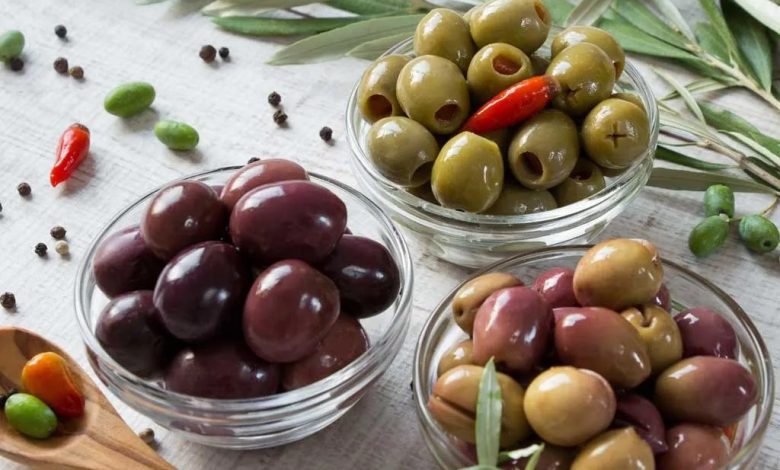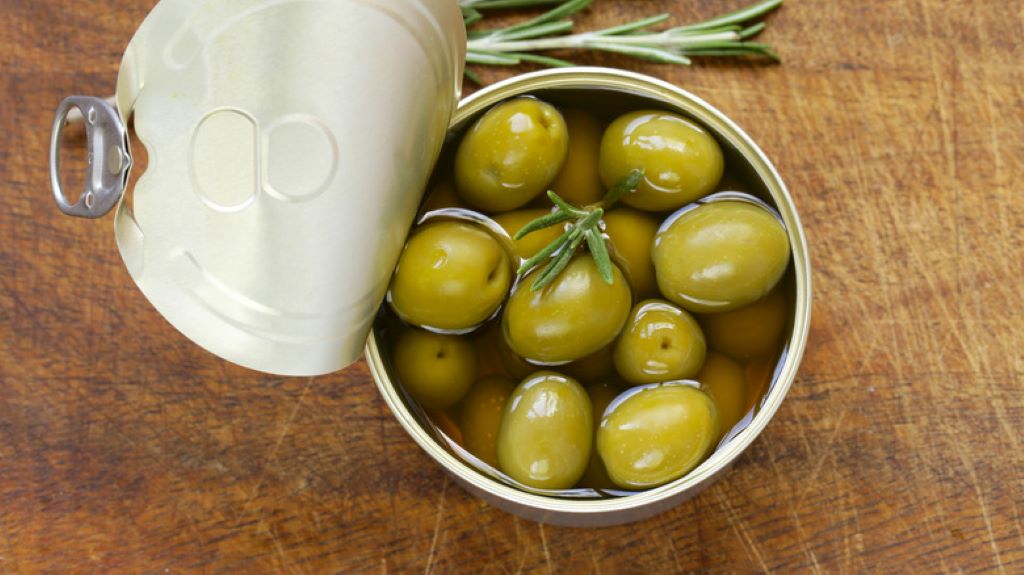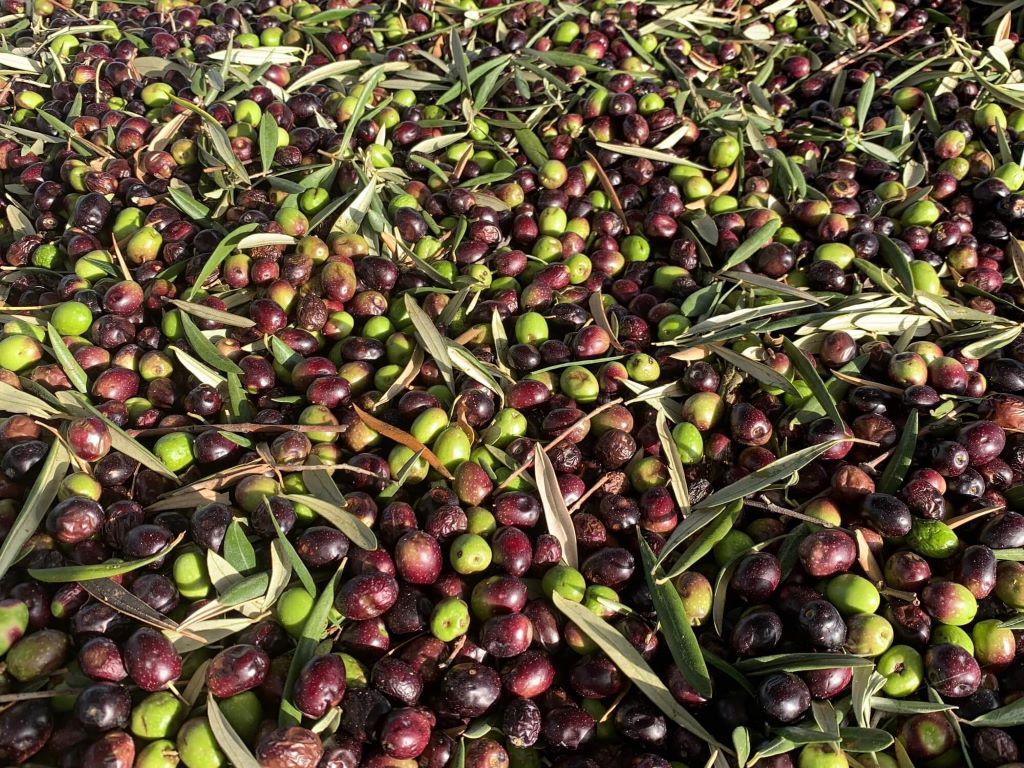Are Olives Acidic? Definitive Guide to Olives

They’re one of those foods folks tend to have strong opinions on—you either love ’em or hate ’em. I’m talking about olives, of course! These little flavor bombs can be an acquired taste (I’ll admit I wasn’t always a huge fan), but there’s no denying their iconic status in certain cuisines. I mean, could you even imagine Italian food without them? But for some people, the bigger question around olives isn’t whether they taste good. It’s “Are olives acidic?” Let’s explore, shall we?
What Makes a Food Acidic (or Alkaline)?
Before we dive into olives specifically, let’s quickly cover what makes any food acidic or alkaline in the first place.
It comes down to a measurement called pH. This scale rates how acidic or alkaline something is from 0-14:
- 0-6.9 = Acidic (lower # = more acidic)
- 7 = Neutral
- 7.1-14 = Alkaline (higher # = more alkaline)
The natural pH of olives depends on a few key factors:

What Type of Olive Matters
There are over 2000 varieties of olives grown around the world, but they tend to fall into one of two main categories:
Green Olives
These olives are harvested in their unripe, green phase. Popular green olive varieties include:
- Manzanilla
- Mission
- Picholine
- Lucque
Green olives tend to taste bright, tangy, and bitter—some even say they have a sharp or spicy flavor.
Black Olives
These ripe olives develop a black/purple skin when fully mature. Some common kinds of black olives are:
- Kalamata
- Tagiasca
- Nyons
- Thassos
Compared to green olives, black olives taste mellower, earthier, and sweeter.
So are green or black olives more acidic?
Green Olives Are More Acidic Than Black
In their raw state straight off the trees, green olives clock in with a pH of around 3-4, making them quite acidic.
Black olives, on the other hand, tend to have a pH of around 6-7 when fresh, putting them in the mildly acidic to neutral range.
What causes such a big difference, when they come from the same fruit?
It comes down to ripeness. Unripe green olives contain higher concentrations of bitter compounds like oleuropein. This compound breaks down as olives ripen and turn black, reducing acidity and bitterness.
However, the olive variety and its growing conditions can impact acidity levels too. So green and black olives aren’t guaranteed to always fall within those pH ranges.
Now here’s where things get interesting…
Olive Preparation Methods Also Affect Acidity
After olives are harvested, they typically undergo some kind of processing before they’re considered edible.
Why? Raw olives are very bitter due to high levels of oleuropein and other compounds.
That’s why almost all olives found in grocery stores or served at restaurants have been cured, brined, fermented, or pickled in some way:
Water-Cured Olives
Water curing involves soaking olives in water to remove bitterness, and then packing them in salt to draw out moisture. This method retains its fresh, fruity flavor.
Since water curing doesn’t usually lower the pH much, these olives end up with a similar acidity level to their raw state.
Salt-Cured Olives
Salt curing is similar, except the olives soak directly in high concentrations of salt brine instead of plain water. This process still leaves some bitterness behind.
The salt solution helps firm up olive flesh but doesn’t reduce acidity much by itself. So salt-cured olives also end up with a similar pH level as raw fruit.
Lye-Cured Olives
For commercial production, soaking olives in food-grade lye brine is a popular fast-acting way to minimize bitterness.
Lye isn’t significantly alkaline on its own. But this chemical process does seem to take green olives from very acidic down to moderately acidic (around pH 4-6).
Brined Olives
Green and black olives destined for canned products are often submerged in vinegar or acidic brine instead of salty water. Why? Because vinegar helps preserve their shelf life.
Over weeks or months, the acetic acid permeates the olives, significantly dropping the pH. This makes pickled olives quite sour and acidic.
Fermented Olives
In traditional fermentation, olives soak for months in water that gets progressively saltier. Beneficial bacteria feed on the olives’ sugars and oleuropein, generating lactic acid as a byproduct.
Much like vinegar brines, this lactic acid infusion makes fermented olives highly acidic—often dropping their pH well below 4.
Acidity Impacts Olive Flavor
Now that we’ve covered the factors that determine olive acidity, let’s connect those pH levels back to how olives taste.
In their raw state, green olives without curing taste very bitter and astringent due to high acidity (alongside oleuropein). Black olives still carry some bitterness when fresh, just less than green.
As acidity goes down during processing, bitterness fades while fruity, savory flavors emerge. So properly cured green and black olives strike a pleasant balance between tart and sweet.
However, when acidity spikes from methods like pickling or fermentation, sourness jumps to the forefront. Many olive lovers specifically enjoy this bright, tangy taste. However high acidity can irritate sensitive teeth and mouths.
Do Olives Have Alkaline Properties After Digestion?
Reading about all this acidity in olives may prompt a question: “Aren’t olives alkaline?”
This idea comes from the ash residue (akin to baking soda) produced when olives burn. Since baking soda is alkaline with a very high pH, the logic is that olives leave alkaline ash too.
However, what happens inside our gut is more complex than ashy remnants. Though acidic before eating, some sources suggest olives may have an alkalizing effect on the body post-digestion.
Why? Because of how our kidneys process the organic acids in olives. As part of removing acids through urine, our kidneys trigger the release of bicarbonate compounds to help regulate pH balance in tissues and blood. So while olives contain acids, our body may neutralize those acids during and after metabolizing the flesh and fluids we ingest.
In that sense, olives could be considered alkalizing, or at least neutral, foods after passing through digestion despite being acidic themselves. That said, much more research is still needed to substantiate potential alkaline claims around plant foods like olives.
Best Olives for Reducing Acidity and Heartburn Issues
If you find acid reflux or other digestion troubles flare up when eating olives, sticking with less acidic varieties can help minimize that irritation. Here are some of the better options:

Rinsed Black Olives
Compared to most green olives, black olives offer that mellower flavor and moderate acidity when fresh or simply brined. Quickly rinsing jarred or canned black olives reduces acidity further by washing away excess vinegar or preservative solution.
Water or Salt-Cured Olives
Water and salt curing methods retain an olive’s natural acidity level, which is lower for tree-ripened black olives. This allows their richer, earthier taste to shine through.
Lye-Cured Green Olives
While still moderately acidic, commercial lye curing does take some of the bite and bitterness out of raw green olives. Their pH ends up closer to black olives. Just rinse off the lye solution thoroughly after purchase.
Limit Pickled and Fermented Olives
Unfortunately, the tangy zing of pickled or fermented olives comes from introducing more acid. Their very sharp, salty flavor and lower pH mean more potential to trigger reflux.
In Conclusion: How Acidic Are Olives?
While olive acidity and pH fluctuates depending on the type, curing process, and individual fruit—here is the final takeaway:
- Green olives tend to be highly acidic raw and retain more acidity through water- or salt-curing methods. Lye processing lowers green olive acidity slightly. Pickling or fermenting spikes acidity again.
- Black olives start less bitter with neutral to mild acidity when fresh. Further processing methods determine the final pH, but black olives mostly remain in the low to moderate acid range.
- Though acidic themselves, some theories suggest olives may stimulate alkalization during or after digestion. However considerable research is still needed into potential pH impacts on the body.
Embracing the natural beauty of olive skin comes with its own set of challenges, but with the right makeup and hair colors, you can enhance its warmth and richness; however, for those with sensitivity to acid, opting for rinsed black olives or water/salt-cured green olives in your diet is advisable over pickled or fermented choices to minimize the risk of irritation.
I hope this guide helped shed some light on the acidity of this delicious yet polarizing fruit! Let’s wrap up with a few frequently asked questions:
FAQs
Are olives alkaline?
While containing alkaline ash, olives themselves are acidic before curing, with levels depending on ripeness and variety. Some argue olives promote alkalinity internally after eating, but concrete research is lacking.
Why are green olives so acidic?
Unripe green olives are high in bitter compounds like oleuropein that haven’t broken down yet, contributing to very high acidity around pH 3-4 when raw. Further pickling or fermenting increases levels further.
Do olives have citric acid?
No, olives contain plant-based organic acids like malic acid primarily. Soaking in vinegar infuses additional acetic acid. Fermenting introduces lactic acid. But olives don’t naturally contain citric acid specifically.
What are the lowest acidity olives?
Black olives tend to be the lowest in acid, registering between pH 6-7 when fresh. Water- or salt-cured green olives also retain less acidity without further processing. Rinsing all packaged olives helps moderate acidity too.
Can olives increase stomach acid?
Potentially. Pickled, fermented, or highly acidic olives can trigger more stomach acid production to help break proteins down. So people with ulcers or reflux issues may need to limit acidic olive varieties.




